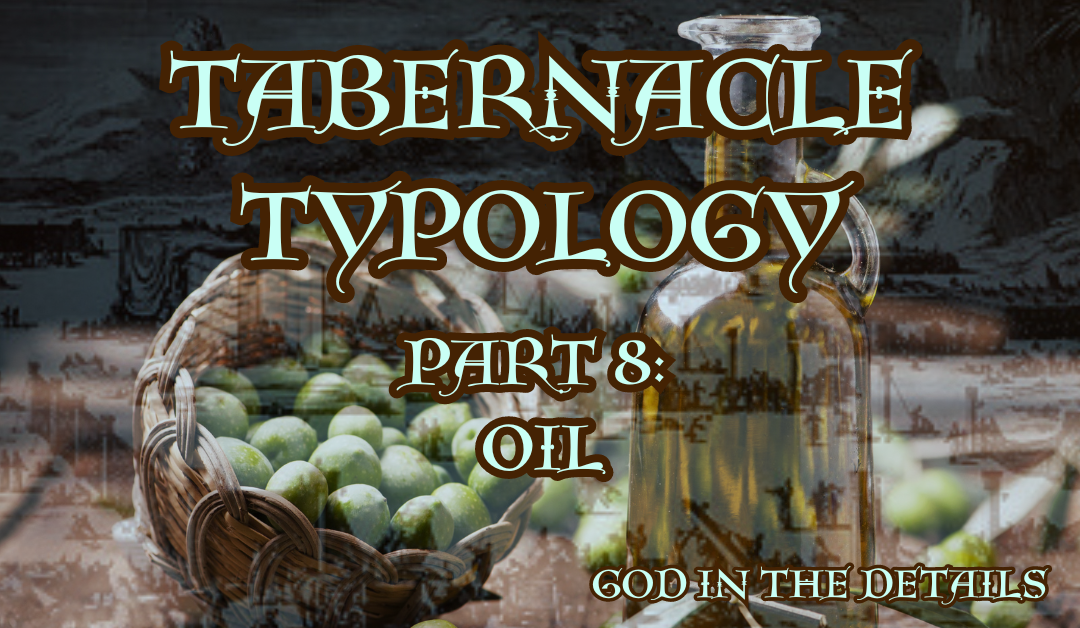
Tabernacle Typology 10: Incense
Exodus 30:34-35, KJV:
“And the Lord said unto Moses, Take unto thee sweet spices, stacte, and onycha, and galbanum; these sweet spices with pure frankincense: of each shall there be a like weight: And thou shalt make it a perfume, a confection after the art of the apothecary, tempered together, pure and holy…”
According to the Lord’s command, incense was made for burning on the golden altar within the Sanctuary.
It was made of equal quantities of stacte, galbanum, onycha and frankincense.
Frankincense: Considered a sign of wealth and prosperity, it was a very costly substance in ancient times. It was and still is widely used in many religious and spiritual practices around the world.
The plant it is derived from – Boswellia Sacra – grows in some of the most harsh and arid regions in the world.
The frankincense speaks of the divinity of Jesus. It is the divinity of Jesus that is worthy of all worship and adoration.
As frankincense is used symbolically in the Bible to represent our prayers (eg. Revelation 5) it is also typical of His priesthood and represents His intercession for us on the cross.
Stacte: ‘Stacte’ is a Greek word meaning ‘oozing substance’. The Hebrew word used here is ‘Nataph’ which is translated as ‘drop’ and can mean ‘to distil’. Many scholars believe that this refers to a type of distilled myrrh. Another strong contender is the resin from the storax tree.
Storax is a medicinal shrub. In ancient times its resin was a popular additive to all kinds of incense.
Jewish tradition, however, holds that ‘Stacte’ was synonymous with opobalsamum – a rare type of myrrh found growing wild in Yemen, Mecca and Israel. The first-century rabbi Gamliel said, “Stacte is simply the sap that drips from the tapping of the wood of the balsam tree” (Kerithot 6a).
The balsam tree is also where the famous healing Balm of Gilead was derived from.
Besides its many medicinal uses, it was also a highly volatile, flammable substance.
As the incense is typical of our worship of Christ, the stacte typifies the spread of the Gospel through the Spirit after the resurrection – it spread like wildfire!
The sweet stacte released upon the Cross, through the piercing of Jesus(much like the trees were ‘wounded’ to procure the resin) and the power of His sacrifice, caught fire in the hearts of believers everywhere and continues to catch a flame – continues to burn throughout the ages – releasing the fragrant offering of our praise.
Onycha: Derived from the operculum of certain sea snails – it resembles a fingernail and is a sort of secreted plate that closes the aperture of the shell when the snail is retracted – sort of like a trap door.
These little plates would be removed, cleaned and soaked in either fermented caper berry juice or white wine, before being crushed into a powder for use in perfumes and incense.
Christ was crushed for our iniquities (Isa 53:5) – the sweet, fragrant sacrifice of our Lord is a main ingredient in the incense of our praise and worship.
Galbanum: Commonly used in the ‘green’ incense of the ancient Egyptians, galbanum offered a very bitter, acrid and peculiar smell, before changing to a very complex spicy and balsam-like fragrance similar to green apples and musk.
According to the French Rabbi Rashi, the resin of the galbanum flower was an intentional additive to the incense because of its bitter taste – to serve as a reminder of our sin as people.
Kris Valloton is quoted as saying: “There is no victory without a battle, no testimony without a test, and no miracle without an impossible circumstance.”
Just so Christ upon the Cross took our battle upon Himself. Although the initial notes would be bitter and acrid, He took our sins and sorrows and traded them for beauty and joy.
The bitter galbanum serves as a reminder, in our worship of Christ, of where we came from – but also hints at where we are going. His work on the cross transforming us from wretched sinners to victorious overcomers.
No longer do we smell of sin and shame – but rather the sweetness of His sacrifice.
Just before closing I would like to point out that all of the above ingredients are the result of wounding and crushing – just like the pain and suffering of our Saviour – His wounding and crushing – is the origin of the fragrant offer of our prayers and worship.
Let us approach each day with the incense of worship burning in our hearts, giving all our praise and adoration to the One who is worthy of it all!
Reflect:
1. The galbanum, when burnt, offers a bitter, acrid (unpleasantly pungent) smell before giving way to a sweeter, musky fragrance. How does this speak to you? How does this represent your testimony?
2. All of the ingredients above are the result of wounding, crushing and a tearing apart. True worship comes from the heart. How does the wounding, crushing and tearing apart speak about true worship?
Prayer: Lord, let sweet incense arise from my heart. Let praise and thanksgiving be upon my lips. I thank You Lord for Your blood, shed upon the Cross – for the wounding and the crushing You had to endure on my behalf. Let that same sweet fragrance be released in my heart – a broken heart, my repentant heart. Break my heart for what breaks Yours, Lord, and let my life be a fragrant offering unto You.




